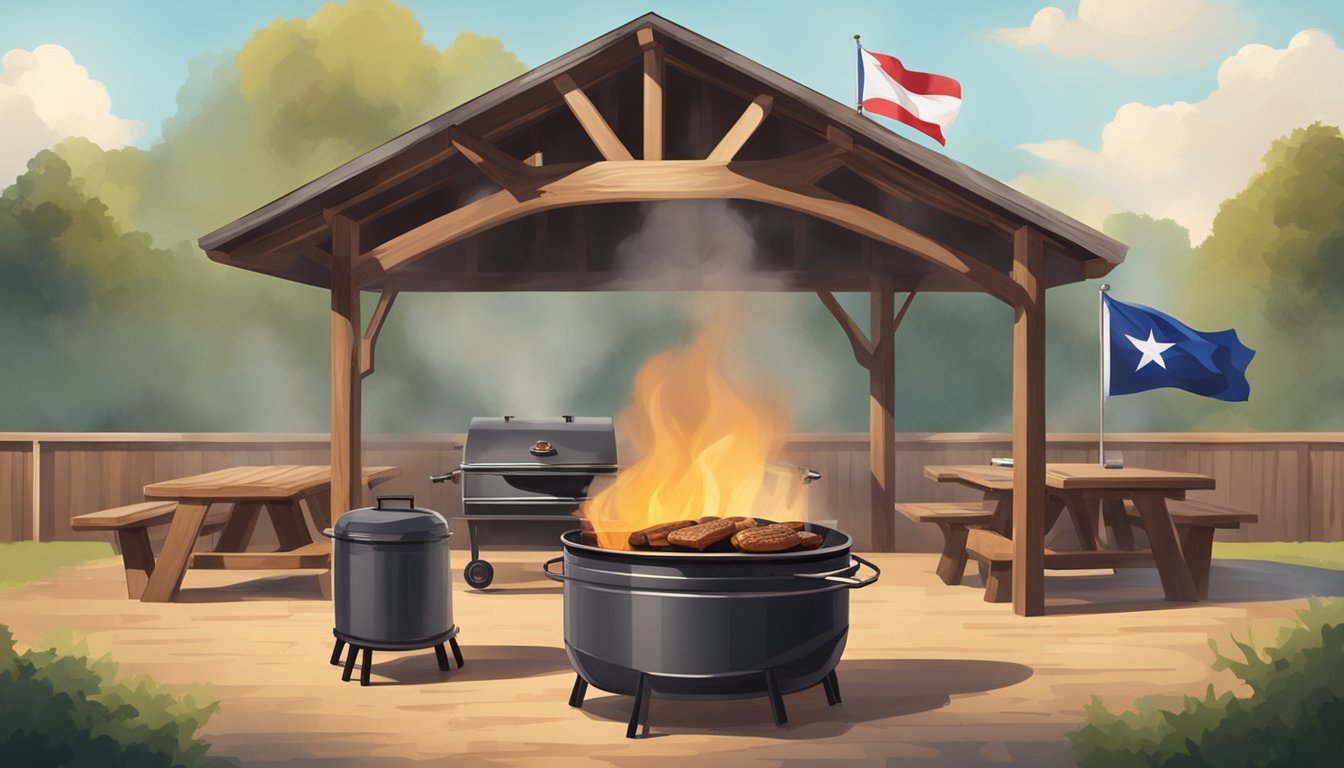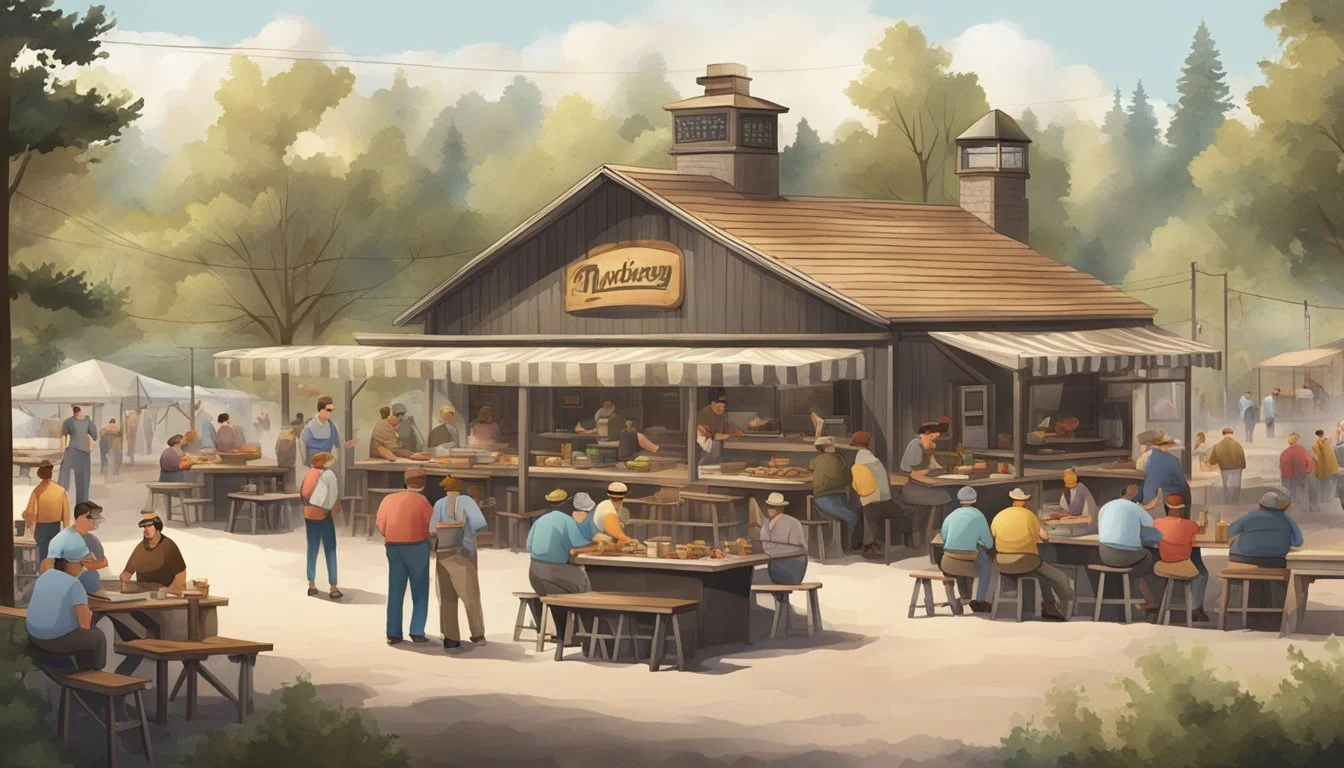What Is Central Texas BBQ?
Unveiling the Smoky Secrets of a Regional Delight
Central Texas barbecue (What wine goes well with barbecue?) is a revered tradition in the Lone Star State, deeply rooted in the region’s history and culture. It differentiates itself with a straightforward approach: meat is primarily seasoned with just salt and black pepper and then smoked low and slow over indirect heat. Unlike other styles that may use a variety of woods, Central Texas pitmasters often favor post oak for its ability to impart a subtle, smoky flavor without overwhelming the natural taste of the meat, making beef (how long does beef last?) brisket the undisputed star of the plate.
The technique of smoking meat in Central Texas has evolved into an art, perfected by barbecue joints like Franklin Barbecue and Kreuz Market, which draw crowds for their tender brisket and other smoked meats (What wine goes well with smoked meats?). The method requires patience and experience to maintain a consistent heat in the pits, ensuring each cut reaches its peak tenderness and flavor. This style of barbecue is often presented on butcher paper, maintaining the focus on the quality and flavors of the meat itself without a need for heavy sauces or distractions.
While brisket may be the centerpiece, a complete Central Texas barbecue menu can include succulent pork ribs, (What wine goes well with pork ribs?) beef ribs, and sausages with sides that often feature classic staples like coleslaw, beans, and potato salad. Desserts such as banana pudding or peach cobbler can round off the meal, offering a sweet finish to a deeply satisfying barbecue experience. With roots in German and Czech meat market traditions, Central Texas barbecue stands as a hallmark of American culinary culture, embodying a history that spans generations and continues to innovate while staying true to its origins.
Historical Roots of Central Texas BBQ
Central Texas BBQ represents a tradition steeped in the rich confluence of immigrant influences and practical culinary evolution from local meat markets to iconic barbecue joints.
Influence of German and Czech Immigrants
The Central Texas-style barbecue is significantly shaped by the culinary practices brought to the region by German and Czech settlers in the late 19th century. They applied their old-world butchering and meat preservation techniques in their new country. Butcher shops run by these immigrants often smoked leftover cuts of meat, mainly beef, due to the lack of refrigeration. This practice not only aided in preserving the meat but also imparted a distinctive smoky flavor that became synonymous with the region’s barbecue.
Evolution from Meat Markets to Barbecue Joints
Originally, the smoked meats were merely a way to avoid waste in German and Czech meat markets. However, with time, the demand for these smoked meats grew, giving rise to dedicated barbecue spots. Beef brisket, (What wine goes well with beef brisket?) a cut which exemplifies Central Texas BBQ, and other meats were slow-cooked over indirect heat — a method that ensures a tender brisket with a rich crust or 'bark'. Over time, establishments like Kreuz Market in Lockhart evolved from meat markets into full-fledged barbecue joints, becoming central to the barbecue culture. These spots focused on simplicity, often eschewing sauces to highlight the quality of the smoked meats, served on butcher paper to emphasize their market roots.
The Central Texas BBQ Technique
Central Texas BBQ is characterized by its meticulous low-and-slow cooking method, carefully selected woods that impart distinctive smoky flavors, (What wine goes well with smoky flavors?) and a preference for indirect heat to ensure tender brisket.
Low and Slow Cooking Method
In Central Texas barbecue, the low and slow approach is fundamental. Meat, most notably beef brisket, is cooked at a low temperature, typically between 225-275°F, for an extended period. This could mean a cooking time ranging anywhere from 12 to 18 hours, depending on the size and cut of the meat. The goal is to break down the tough collagen in beef into succulent gelatin, yielding a tender brisket that's both juicy and flavorful.
Distinctive Use of Woods and Smoke
Choosing the right wood is a critical aspect of authentic Central Texas BBQ, with post oak being the wood of choice. Known for its consistent heat and mild smoke flavor, post oak imparts a subtle taste that complements the natural flavor of the meat without overpowering it. Occasionally, pecan and hickory woods are also utilized, each adding their unique profiles to the barbecue.
Direct vs. Indirect Heat
The technique of smoking meat using indirect heat is a staple in Central Texas-style barbecue. Unlike the direct heat method where meat is cooked over the flames, indirect cooking places the meat away from the fire, allowing the smoke to envelop the food and cook it evenly. The result is meat that's infused with a smoky flavor, moist on the inside, and blessed with a desirable, crusty "bark" on the outside. Barbecue pits—often large enough to walk into—are the traditional apparatus used in this long-honored style of cooking.
Signature Meats and Flavors
Central Texas barbecue is distinguished by its wide array of meats, primarily beef, which are seasoned with a simple blend of spices and slow-cooked to perfection. Often, the meat's natural flavors are showcased, with smoke being a signature element of the taste profile.
Brisket: The Star of Central Texas BBQ
Brisket is undoubtedly the centerpiece of Central Texas BBQ. It's typically prepared with a simple rub of salt and black pepper, highlighting the quality of the beef. Traditionally, brisket is cooked low and slow using indirect heat from woods like hickory and post oak, which are preferred for their contribution to the meat's smoky flavor. This method ensures a tender brisket with a crusty, flavorful bark. Renowned establishments like Franklin Barbecue and Louie Mueller have elevated brisket to high art, serving slices wrapped in butcher paper to emphasize their commitment to tradition.
Point
The fattier end, known for being exceptionally moist.
Flat
The leaner portion, sliced against the grain.
Bark
The dark, seasoned crust formed during the smoking process.
Variety of Meats: Ribs, Sausage, and More
While brisket may be the star, Central Texas BBQ also offers a variety of other meats such as pork ribs, beef ribs, and sausage. Ribs are slow-smoked until they reach a perfect balance of being tender yet holding onto the bone, with beef ribs sometimes being as coveted as brisket. Sausage, often locally made, is a nod to the German and Czech heritage of the region, linking the history of Texas BBQ to its meat market origins. Each meat contributes its unique texture and flavor to the barbecue menu, from the fall-off-the-bone pork ribs to the dense, peppery sausage links. Each establishment, from Kreuz Market to lesser-known local barbecue restaurants, offers a distinct take on these traditional meats, often served in generous portions on barbecue plates or butcher paper with a side of pickles and onions.
Pork Ribs
Preparation: Tender, slow-cooked with a slightly sweet glaze.
Wood of Choice: Pecan wood or Mesquite wood
Beef Ribs
Preparation: Large, meaty ribs with a simple seasoning.
Wood of Choice: Post Oak wood
Sausage
Preparation: Juicy, with a snappy casing and peppery flavor.
Wood of Choice: Variety of Woods
Iconic Central Texas BBQ Establishments
Central Texas is renowned for its BBQ, with iconic establishments setting the standard for this beloved American tradition. Pitmasters with historical influence and modern institutions alike have contributed to the region's reputation as a haven for BBQ enthusiasts.
Pioneer Pitmasters and Their Legacies
In the heart of Texas, historic barbecue joints like Kreuz Market and Louie Mueller Barbecue have laid the foundation for what's now known as Central Texas-style barbecue. Using indirect heat from native woods like post oak, these establishments focus on high-quality meats served on butcher paper. Kreuz Market, located in Lockhart, dates back to the early 20th century when German settlers introduced meticulous meat-smoking techniques that have endured for over a century. Similarly, Louie Mueller in Taylor has been serving up delectable beef ribs and tender brisket wrapped in a delicious smoky flavor since 1949, a technique passed down through generations of pitmasters.
Franklin Barbecue: A Modern Institution
Franklin Barbecue in Austin, led by James Beard Award-winning pitmaster Aaron Franklin, represents the pinnacle of modern Central Texas BBQ. His approach marries time-honored traditions with contemporary preferences, using a low-and-slow cooking style that results in a moist brisket with a perfectly seasoned crust. Franklin's dedication to maintaining a consistent heat and smoke flavor has earned him a legendary status among barbecue aficionados.
Smaller Towns' Hidden Gems
Beyond the well-known BBQ cities, smaller towns in Central Texas harbor hidden gems offering authentic barbecue experiences. Lexington's Snow's BBQ, where pitmaster Tootsie Tomanetz presides, has gained acclaim for its exquisite meats and true cowboy-style cooking. Southside Market in Elgin, the oldest BBQ joint in the state, also deserves mention for its influence on the region's barbecue culture with its traditional sausages and a menu that's grown to include pork ribs and peach cobbler. Meanwhile, in towns like Brenham and Luling, smaller barbecue spots continue the region's rich tradition, often integrating Mexican influences into their menu.
Each of these establishments not only provides a delicious barbecue plate but also contributes to the tapestry of the Central Texas barbecue community, reflecting the region's history, people, and diverse culinary influences.
Accompaniments and Traditions
Central Texas BBQ is as much about the meat as it is about the traditional sides and desserts that complement it, creating an entire cultural dining experience centered around community and long-standing culinary practices.
Sides and Desserts Unique to the Region
Central Texas BBQ often features sides like potato salad, coleslaw, and beans. These are staples on the barbecue menu and are typically served in simple fashion, reflecting the straightforward approach of the region’s barbecue tradition. Desserts like banana pudding and peach cobbler are common sweet endings to a savory meal and are deeply rooted in the region's culinary history. The choice of desserts highlights the influence of Southern cooking traditions merging with the meat-centric focus of Texas BBQ.
Sides:
Potato salad
Coleslaw
Beans
Desserts:
Banana Pudding
Peach Cobbler
The Cultural Experience of Central Texas BBQ
The act of enjoying Central Texas BBQ is an experience steeped in tradition, stretching back centuries to German and Czech settlers who brought their meat smoking and butchery skills to the region. These gatherings are often informal, with communal tables where people from all walks of life sit shoulder to shoulder, enjoying the food and camaraderie. The atmosphere in barbecue joints like Franklin Barbecue or Louie Mueller is convivial and buzzing, where the smoky aroma fills the air and butcher paper is commonly used to serve hefty portions of tender brisket or juicy beef ribs. The wood of choice for smoking is typically post oak, providing a consistent heat with a mild, smoky flavor that is a signature of Central Texas BBQ.
Barbecue spots in Central Texas also often offer barbecue plates with white bread and pickles, paired with local beers that embody the region’s preferences and barbecue style. Rarely focusing on barbecue sauces, Central Texas BBQ lets the smoky meat speak for itself, exemplifying a tradition where simplicity and quality stand at the forefront of the barbecue experience.





